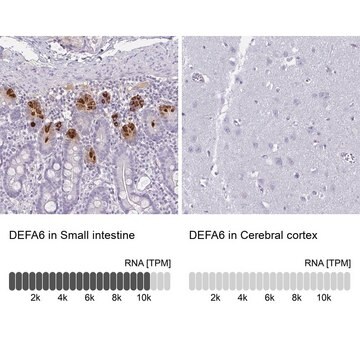HTS005M
ChemiSCREEN CCR1 Membrane Preparation
Human CCR1 GPCR membrane preparation for Radioligand binding Assays.
Sign Into View Organizational & Contract Pricing
All Photos(1)
About This Item
UNSPSC Code:
41106514
eCl@ss:
32161000
NACRES:
NA.84
Recommended Products
biological source
human
Quality Level
recombinant
expressed in Chem-2 cells
manufacturer/tradename
ChemiScreen
Chemicon®
concentration
0.5 mg/mL
technique(s)
radioligand binding assay (RLBA): suitable
NCBI accession no.
UniProt accession no.
shipped in
dry ice
Gene Information
human ... CCR1(1230)
General description
CCR1 is a GPCR that binds to a variety of CC ligands, including MIP-1a, RANTES, MCP-3, HCC-1, HCC-2, HCC-4, and MPIF-1 (Olson and Ley, 2002). Lymphocytes, macrophages, dendritic cells, and GM-CSF-activated neutrophils express CCR1 (Kaufmann et al., 2001; Cheng et al., 2001). Two selective, non-peptide small molecule antagonists of CCR1, BX-471 and CP-481,715, have been synthesized (Gladue et al., 2003; Liang et al., 2000). Pharmacological and genetic targeting of CCR1, either alone or in combination with cyclosporin A, reduces cardiac and renal allograft rejection (Gao et al., 2000; Horuk et al., 2001a; Horuk et al., 2001b), allergic encephalomyelitis (Liang et al., 2000), and renal fibrosis (Anders et al., 2002) in experimental models. Chemicon′s CCR1 Membrane Preparations are ideal for screening molecules that disrupt interaction between CCR1 and its ligands. The CCR1 Membrane Preps bind to MIP-1a with a Kd of 1.8 nM, and yield greater than 10-fold signal to background ratio with a MIP-1a concentration of 0.1 nM.
Full-length human CCR1 cDNA
application
Radioligand binding assay.
Biochem/physiol Actions
GPCR Class: A
Protein Target: CCR1
Target Sub-Family: Chemokine
Quality
SPECIFICATIONS:
Bmax for [125I]MIP-1alpha binding: 3.3 pmol/mg protein
Kd for [125I] MIP-1alpha binding: ~ 1.8 nM HOST CELLS:
Bmax for [125I]MIP-1alpha binding: 3.3 pmol/mg protein
Kd for [125I] MIP-1alpha binding: ~ 1.8 nM HOST CELLS:
Physical form
Liquid in packaging buffer: 50 mM Tris pH 7.4, 10% glycerol and 1% BSA with no preservatives.
Packaging method: Membranes protein were adjusted to the indicated concentration in packaging buffer, rapidly frozen, and stored at -80°C.
Each vial typically contains 500 units, where one unit is the amount of membrane prep that yields greater than 1000 cpm specific binding of 125I-labeled MIP-1α (0.1 nM input concentration).
Packaging method: Membranes protein were adjusted to the indicated concentration in packaging buffer, rapidly frozen, and stored at -80°C.
Each vial typically contains 500 units, where one unit is the amount of membrane prep that yields greater than 1000 cpm specific binding of 125I-labeled MIP-1α (0.1 nM input concentration).
Storage and Stability
Maintain frozen at -70°C for up to 2 years. Do not freeze and thaw.
Legal Information
CHEMICON is a registered trademark of Merck KGaA, Darmstadt, Germany
Disclaimer
Unless otherwise stated in our catalog or other company documentation accompanying the product(s), our products are intended for research use only and are not to be used for any other purpose, which includes but is not limited to, unauthorized commercial uses, in vitro diagnostic uses, ex vivo or in vivo therapeutic uses or any type of consumption or application to humans or animals.
Storage Class
12 - Non Combustible Liquids
wgk_germany
WGK 2
Certificates of Analysis (COA)
Search for Certificates of Analysis (COA) by entering the products Lot/Batch Number. Lot and Batch Numbers can be found on a product’s label following the words ‘Lot’ or ‘Batch’.
Already Own This Product?
Find documentation for the products that you have recently purchased in the Document Library.
S S Cheng et al.
Journal of immunology (Baltimore, Md. : 1950), 166(2), 1178-1184 (2001-01-06)
Neutrophils (polymorphonuclear leukocytes; PMN) are phagocytic cells instrumental in the clearance of infectious pathogens. Human PMN are commonly thought to respond primarily to chemokines from the CXC family. However, recent findings suggest that under specific cytokine activation conditions, PMN can
Our team of scientists has experience in all areas of research including Life Science, Material Science, Chemical Synthesis, Chromatography, Analytical and many others.
Contact Technical Service






